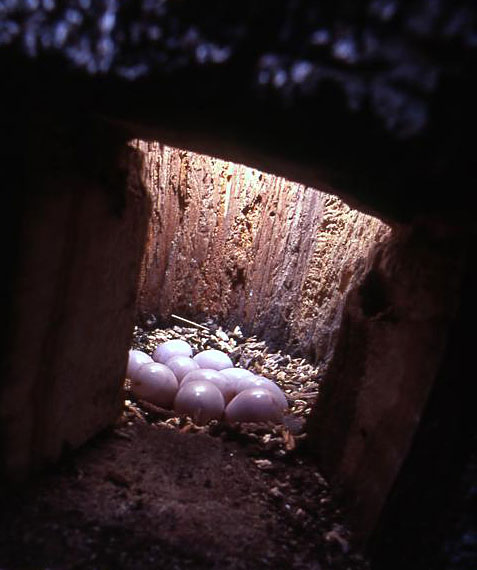
 Where an organism occurs, the habitat it selects and the resulting vital rates (growth, survival and fecundity) dictate population dynamics and response to perturbations. Studies are based on sampling data – counts, capture-recapture-recovery, tracking – and planned with an overarching population model and density dependence in mind. We use frequentist or Bayesian approaches to answer our research questions. Examples include using lab and field experiments to estimate density dependence, mark-recapture-recovery data to estimate survival, multi-state models to estimate transition matrices or movement probabilities, distance sampling to estimate population density, integrated population modeling to determine population dynamics, and telemetry data and geographic information systems to determine habitat use. We embrace ways of incorporating citizen-science data into our research. Occasionally, we apply approaches such as expert opinion and interview data. Parameter estimates from these studies underpin mathematical models that describe population dynamics.
Where an organism occurs, the habitat it selects and the resulting vital rates (growth, survival and fecundity) dictate population dynamics and response to perturbations. Studies are based on sampling data – counts, capture-recapture-recovery, tracking – and planned with an overarching population model and density dependence in mind. We use frequentist or Bayesian approaches to answer our research questions. Examples include using lab and field experiments to estimate density dependence, mark-recapture-recovery data to estimate survival, multi-state models to estimate transition matrices or movement probabilities, distance sampling to estimate population density, integrated population modeling to determine population dynamics, and telemetry data and geographic information systems to determine habitat use. We embrace ways of incorporating citizen-science data into our research. Occasionally, we apply approaches such as expert opinion and interview data. Parameter estimates from these studies underpin mathematical models that describe population dynamics.
A key output of our research is deriving predictions within our study system with respect to environmental and anthropogenic variables. For example, predicting survival probability based upon environmental gradients (e.g. habitat quality and distance to roads), reproductive success of songbirds based on habitat quality and conspecific density or estimating population abundance and density of free-roaming cats in urban areas given underlying environmental (e.g. building density) and social variables (e.g. socio-economic income). Often environmental and anthropogenic variables vary spatially across the landscape which results in spatially explicit predictions of survival or abundance that can be applied to making optimal management and conservation decisions.
Techniques used include: Likelihood and Bayesian approaches, mark-recapture, multi-state models, mark-recapture-recovery, lab and field experimentation, point counts, distance sampling, integrated population modeling, GIS, spatial statistics
Current work and opportunities: Habitat selection; individual fitness via fecundity, growth, survival, dispersal and transition/movement; population distribution and abundance; diet assessment
© 2024 Tyler Flockhart | Solutions for complex ecological problems